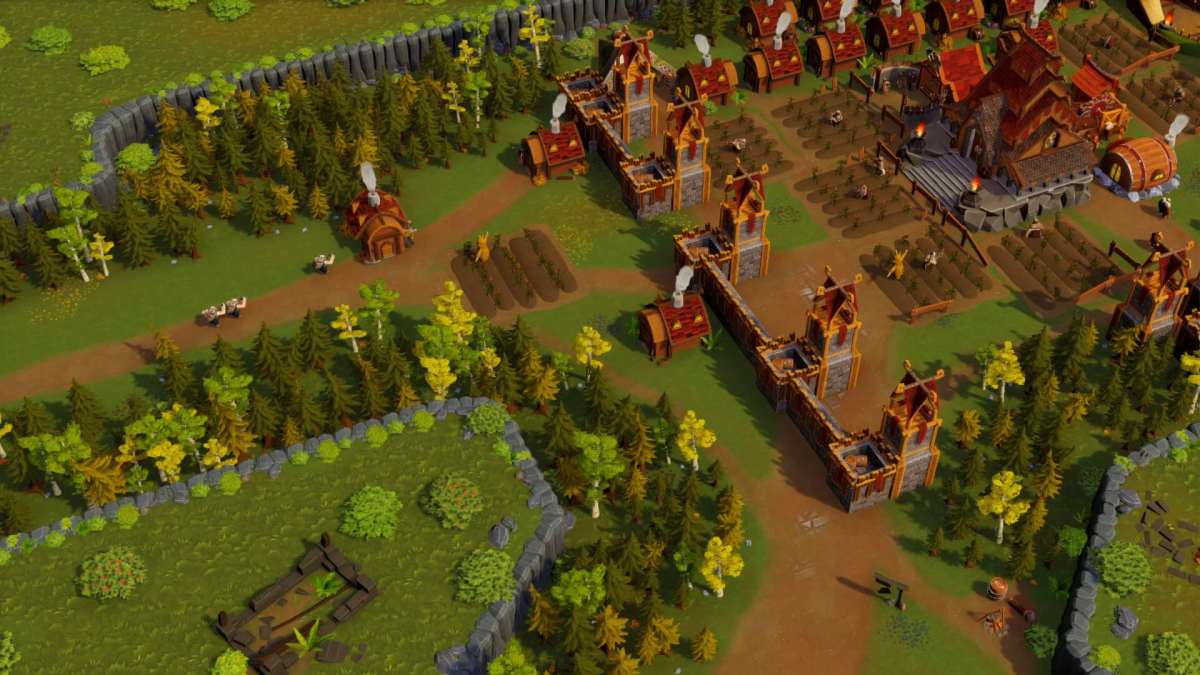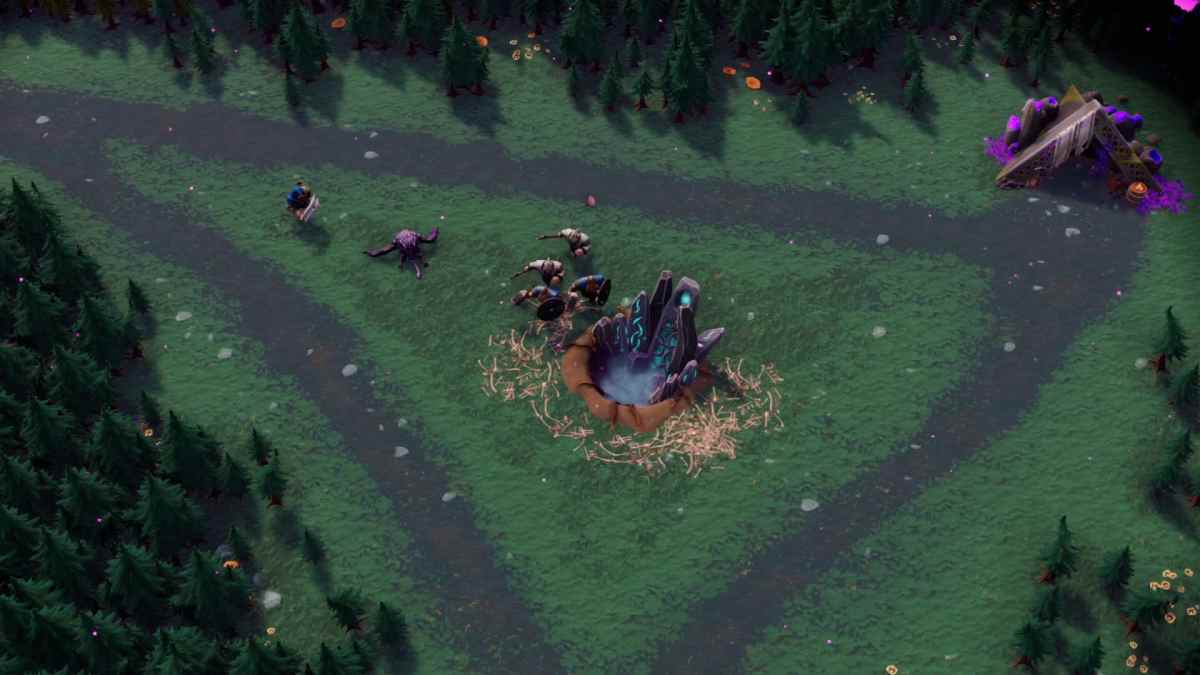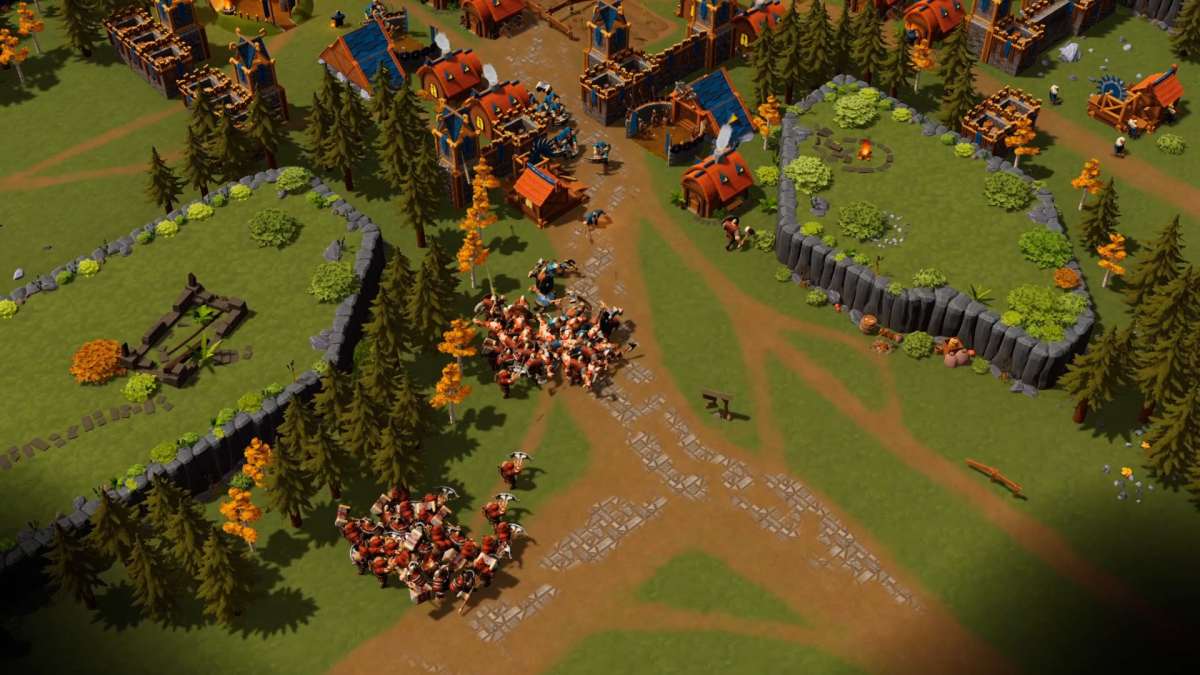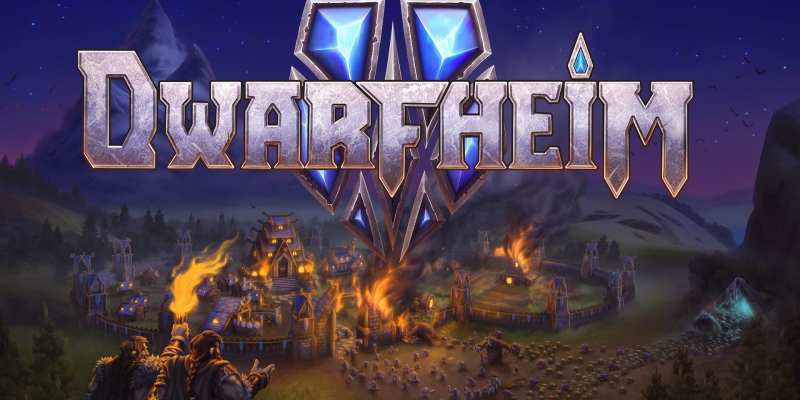At some point, many of us stopped playing real-time strategy games.
The RTS was once one of the biggest genres on PC, but the player base has dwindled. Unless they’re remaking old classics, AAA publishers will barely even touch the genre these days.
Pineleaf Studio, the developer of DwarfHeim, also stopped playing RTS games, for a time. They loved the genre growing up, having been raised on games like Warcraft, Command & Conquer, and StarCraft. Eventually they realized they just weren’t logging in to play anymore.
“We kind of found that we would go to other games instead,” said Pineleaf CEO Hans-Andreas Kleven, “Instead of playing four-team skirmish in StarCraft, we would find ourselves playing Counter-Strike or League of Legends together instead.”
The devs didn’t want to let the RTS genre just fade away. But if it were going to make a comeback, it had to change with the times. So they took a look at the games they were playing for inspiration. The secret to those games’ appeal, they found, was that they were designed to force players to work together.
“We wanted to have an RTS game that had the same kind of cooperation that you would find in those types of games,” Kleven said. “We believe that that had been really lacking in the RTS genre.”
That kind of cooperation is immediately on display when you launch a game of DwarfHeim, form a team, and choose a class. These classes control different facets of a single Dwarven base, each with a separate focus that relies on the others.

There’s the Builder class, which is in charge of construction, farming, and woodcutting. They also can build defensive structures, holding off enemy players and waves of computer-controlled trolls that attack your base every four minutes. These structures can be built anywhere on the map, letting players recreate the old Age of Empires tower rush strategy.
The Warrior class is the one that has access to most of the troops, though they’re reliant on the Builder to create the structures required to train them. There’s a bit of League of Legends and Warcraft III built into the mechanics, with multiple lanes you can take to the enemy base, and trolls scattered around the map that you can attack to gain resources.
The Miner is probably the most unique class. Anyone playing as a Miner has to set up a series of conveyor belts and refineries to produce increasingly valuable materials, which are used by both the Builder and the Warrior. The Miner works in a separate underground map, digging through solid walls in a way that feels reminiscent of Dungeon Keeper. Everyone can access this underground map, meaning it’s mostly up to the other classes to defend their all-too-crucial supply lines.
There’s a fourth class, the subterfuge-based Diplomat, which hasn’t been implemented yet. Pineleaf hopes to make playing as a Diplomat a unique experience.
“The Diplomat class is sort of new to the RTS genre, in a way, because it’s got to focus more on sabotage and assassination,” said Marianne Austvik, the COO of Pineleaf Studio. “It’s going to be more along the lines of trying to infiltrate the enemy.”

I had the chance to try out all three available classes. Each one felt like a familiar slice of a traditional RTS, but they were all expanded upon in ways that kept them from getting boring on their own.
The complexity of mining made the task into a logic puzzle, and as a Builder I had to be in constant communication with my teammates to make sure they had everything they needed. As a Warrior, I was free to constantly wage war on my foes with a level of focus that I wouldn’t be able to spare if I had to run the economy.
“You have to make sure the players have something to do all the time, playing the different classes,” Austvik said. “We feel that we’ve been able to cater to most of the RTS types of players. The Miner is inspired by Factorio and Dungeon Keeper, while the Warrior is more reminiscent of StarCraft and Warcraft III.”
I never was a particularly offensive player back in the day. But I loved playing the Warrior class in DwarfHeim and felt quite clever as I sneaked around the mines trying to sabotage my opponent’s mining operations.
“It’s one of the places where people are usually the weakest,” Kleven told me.
Of course, I ended up running into a fierce line of defense that left me feeling a lot less clever.

It turned out I was playing against an ex-StarCraft player who had become a major part of the DwarfHeim beta community, and he did not play nice. In response to my attempts at sneaking in and destroying his carefully crafted economic engine, he took the not-altogether-unreasonable response of slaughtering all my men and sending his army to lay waste to my entire civilization.
This would have worked if I weren’t on the same team as two people who were literally in charge of creating the game. Thankfully, they were more vigilant at defense than I was, and the assault was stopped by a line of defensive towers.
It’s one of the game’s strengths that, despite each class having a different focus, each player has a way to cover for the others’ shortcomings. The Warrior can get resources by killing AI-controlled trolls. The Miner and Builder both have units with offensive capabilities. All three can explore the map and let the others know where the enemy is.
“We wanted to keep it that way so that if for any reason someone would go AFK or leave the match, you could still win,” Austvik said. “It should be harder, but you could still win.”
“We also wanted everybody to have something to do when you’re fighting,” added Klevin.
There’s a good chance that DwarfHeim is onto something — it was a refreshing experience that left me hopeful for the game’s future. We’ll just have to see whether all the genre’s old fans agree.
